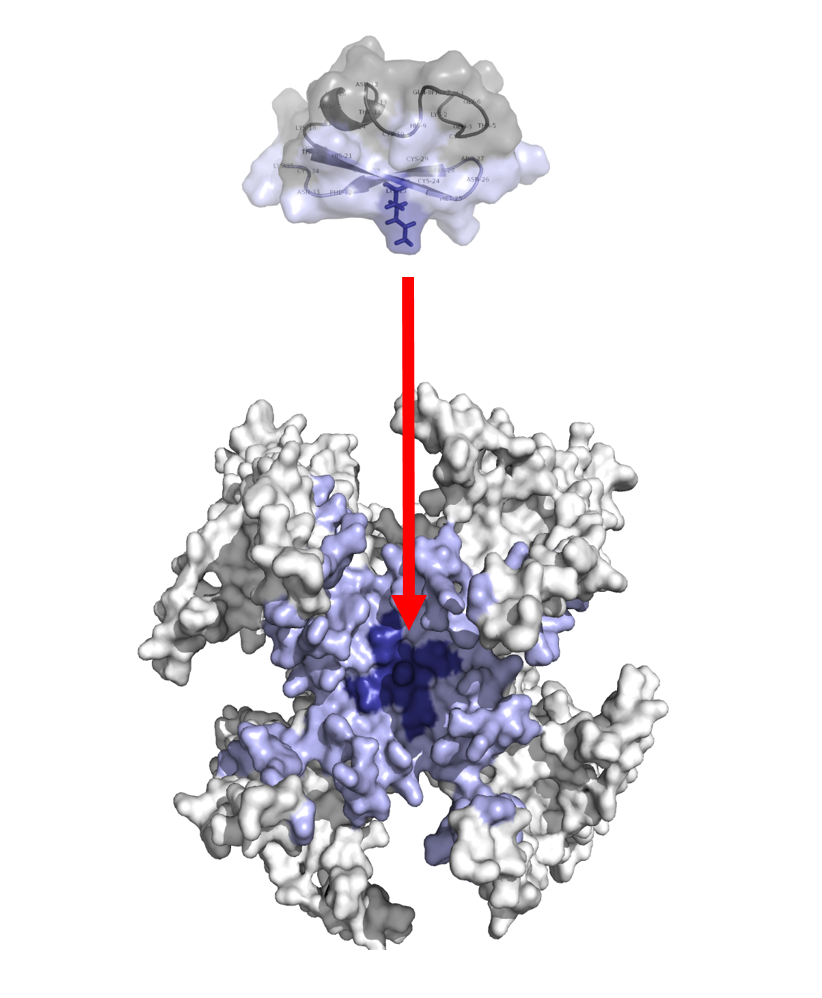
Research > Immunesuppressive ion channel blocking peptide toxins
 The
voltage-gated Kv1.3 potassium channel plays a key role in the
activation of T lymphocytes. By blocking these channels the
proliferation of T cells can be inhibited thus suppressing T-cell
mediated immune responses, which has a great potential in the therapy
of certain autoimmune diseases. Anuroctoxin (1), a 35-amino-acid
scorpion peptide characterized previously is a high affinity blocker of
Kv1.3. Although with lower affinity, Anuroctoxin blocks Kv1.2, which is
expressed in several tissues, thus this property limits the toxin’s
potential clinical use.
The
voltage-gated Kv1.3 potassium channel plays a key role in the
activation of T lymphocytes. By blocking these channels the
proliferation of T cells can be inhibited thus suppressing T-cell
mediated immune responses, which has a great potential in the therapy
of certain autoimmune diseases. Anuroctoxin (1), a 35-amino-acid
scorpion peptide characterized previously is a high affinity blocker of
Kv1.3. Although with lower affinity, Anuroctoxin blocks Kv1.2, which is
expressed in several tissues, thus this property limits the toxin’s
potential clinical use.In order to design new mutants of Anuroctoxin with improved selectivity profile, a detailed understanding of its interaction with voltage gated K+ ion channels is needed. We have prepared synthetic version of Anuroctoxin with solid phase synthesis and verified its activity with Kv1.2 and Kv1.3 channels. We have determined the solution state structure of Anuroctxin using homonuclear NMR techniques and molecular dynamics. The results obtained from the structures based on NMR and from MD simulations suggested that the restricted conformational space of the double substituted toxin compared to the flexible wild-type AnTx is an important determinant of toxin selectivity. The findings may provide foundation for the possibility of designing additional, even more selective toxins targeting various ion channels. Co-laborators: Prof. Gyorgy Panyi, Channel Structure-Function Research Group at the Debrecen University, Hungary.